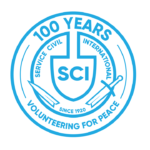Dear members of Asian Development Committee,
This is an open call for application for ASV (Administrative Support Volunteer). Please find more information as below. Feel free to contact us should you need more clarification and kindly let me know if I missed out any branches/anyone in ADC.
Application process: Application will be an open call, all application(s) received will be reviewed by Asian Development Committee-Secretariat (ADS), shortlisted applicant(s) will be contacted for next stage of interview process
Applicant criteria: The ASV has to be committed and understand the role and tasks (refer below for job descriptions), meeting deadline and timeline adherence of tasks are crucial, knowledgeable in IT (Microsoft Office, Skype, Social Media platforms etc)
Application timeline: 30 Aug 2017 to 13 Sept 2017 (2 weeks)
Contract period: Sept 2017 to Aug 2018 (ASV will be reviewed monthly by ADS to ensure good efficiency and competency)
Send your application to: adc-secretariat@sci.ngo
Objective: In line with the recently concluded APM 2017 in Malaysia and among the newly elected ADS, there are hopes and strong-will to make Asian Development Committee more active and inclusive for the benefits of all Asian branches. In order to achieve that, ADC would need additional administrative support, having in mind ADS will be the main driver for Asian Development Committee
Financial support: Euro 40 per month is only a token of appreciation and not amounted to a paid administration job (it still takes a volunteer to take up such responsibility for the common good)
Job descriptions / Expectations:
A) Call for ADC meetings, minute-taker, and follow up on to-do lists via different platforms (send email reminders, contact branches’ PIC and etc) ADS is the elected body in driving and chairing such meetings, implementing objectives and missions of ADC. This volunteer position is for a supporting role only and will not be involved in any decision-making
B) Responsible to update ADC page in SCI Members Area. Ensure proper documentation system and up to date filling.(upload minutes, branch reports, branch documents such as branch constitution, AGM minutes and Asian Voice etc)
C) Ensure ADC mailing list is up and running. To support effective communication/follow up via the mailing list to ensure no Asian branches are left out in knowing latest updates upon the the decisions from ADS
D) To support promotion of Asian branches work camps, activities via social media and other relevant platforms
Promotional activities should be driven by the respective branches but as ADS we would like to constantly encourage them
E) To assist/coordinate in reporting preparation ie; ADC report for the ICM and contribution for the annual report of SCI International
F) To assist and support ADC whenever appropriate/necessary
Thanks and looking forward to receiving your applications.
Edward Chuah
On behalf of Asian Development Committee -Secretariat
New ADC Secretariat email address : adc-secretariat@sci.ngo
SCI Asian Volunteer Network Facebook : https://www.facebook.com/sciasian/

